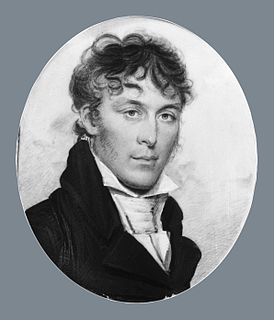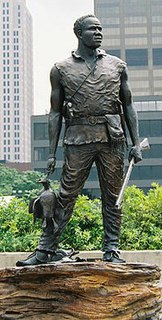 W
WToussaint Charbonneau was a French-Canadian explorer, trader and a member of the Lewis and Clark Expedition. He is also known as the husband of Sacagawea.
 W
WWilliam Clark was an American explorer, soldier, Indian agent, and territorial governor. A native of Virginia, he grew up in prestatehood Kentucky before later settling in what became the state of Missouri. Clark was a planter and slaveholder.
 W
WJohn Colter was a member of the Lewis and Clark Expedition (1804–1806). Though party to one of the more famous expeditions in history, Colter is best remembered for explorations he made during the winter of 1807–1808, when he became the first known person of European descent to enter the region which later became Yellowstone National Park and to see the Teton Mountain Range. Colter spent months alone in the wilderness and is widely considered to be the first known mountain man.
 W
WThe Corps of Discovery was a specially-established unit of the United States Army which formed the nucleus of the Lewis and Clark Expedition that took place between May 1804 and September 1806. The Corps was led jointly by Captain Meriwether Lewis and Second Lieutenant William Clark. Commissioned by President Thomas Jefferson, the Corps' objectives were scientific and commercial – to study the area's plants, animal life, and geography, and to learn how the Louisiana Purchase could be exploited economically. An additional group of scouts, boatmen, and civilians aided the Corps.
 W
WCharles Floyd was an American explorer, a non-commissioned officer in the U.S. Army, and the quartermaster of the Lewis and Clark Expedition. A native of Kentucky, he was a son of Robert Clark Floyd, a nephew of James John Floyd, a cousin of Virginia governor John Floyd, and possibly a relative of William Clark. He was one of the first men to join the expedition, and the only member of the Corps of Discovery to die during the expedition.
 W
WPatrick Gass served as sergeant in the Lewis and Clark Expedition (1804–1806). He was important to the expedition because of his service as a carpenter, and he published the first journal of the expedition in 1807, seven years before the first publication based on Lewis and Clark's journals.
 W
WMeriwether Lewis was an American explorer, soldier, politician, and public administrator, best known for his role as the leader of the Lewis and Clark Expedition, also known as the Corps of Discovery, with William Clark. Their mission was to explore the territory of the Louisiana Purchase, establish trade with, and sovereignty over the natives near the Missouri River, and claim the Pacific Northwest and Oregon Country for the United States before European nations. They also collected scientific data, and information on indigenous nations. President Thomas Jefferson appointed him Governor of Upper Louisiana in 1806. He died of gunshot wounds in what was either a murder or suicide, in 1809.
 W
WNathaniel Hale Pryor (1772–1831) served as Sergeant in the Lewis and Clark Expedition.
 W
WSacagawea was a Lemhi Shoshone woman who, at age 16, met and helped the Lewis and Clark Expedition in achieving their chartered mission objectives by exploring the Louisiana Territory. Sacagawea traveled with the expedition thousands of miles from North Dakota to the Pacific Ocean, helping to establish cultural contacts with Native American populations in addition to her contributions to natural history.
 W
WPrivate John Shields (c1769–1809) was, at about 35 years old, the second oldest member of the Lewis and Clark Expedition and its oldest enlisted member. Shields, born in Virginia's Shenandoah Valley, moved at about 14 years old to the wilderness of Tennessee, helped build and lived in a family fort that provided protection from Native Americans, traveled with Captain Meriwether Lewis, Second Lieutenant William Clark, and Native American Sacagawea to the Oregon Coast where he helped build Fort Clatsop, and then returned to St. Louis, Missouri. At the completion of this great adventure Shields hunted and trapped with the famous American pioneer Daniel Boone.
 W
WYork was the only African American on the Lewis and Clark Expedition and the first African American to have crossed North America to reach the Pacific. York was born enslaved, the son of Old York and Rose who were the slaves of John Clark III, William Clark's father. York was William Clark's lifelong body servant willed to him by his father on July 24, 1799. York was a few years younger than Clark but very large and naturally strong. After experiencing an unprecedented amount of freedom on the Lewis and Clark Expedition, York had trouble adjusting back to the life of a slave. After requesting William Clark for his freedom upon the completion of the expedition, William Clark declined multiple times which led him to become agitated with York and eventually hired him out for work in Louisville, Kentucky. According to Washington Irving, William Clark told Irving he had freed York and given him six horses and a large wagon to start a drayage business driving between Nashville and Richmond. There are conflicting reports on York's death but most historians believe he died from cholera on his way back to William Clark in St. Louis.